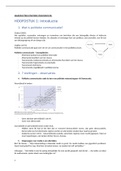Exam (elaborations)
Explore the presentation of Tragedy in A Streetcar Named Desire - A* Model Essay
- Module
- Unit 1 - Drama
- Institution
- PEARSON (PEARSON)
Explore the presentation of Tragedy in A Streetcar Named Desire - A* Model Essay - marked by teacher -includes detailed quote analysis, context, and critics
[Show more]










